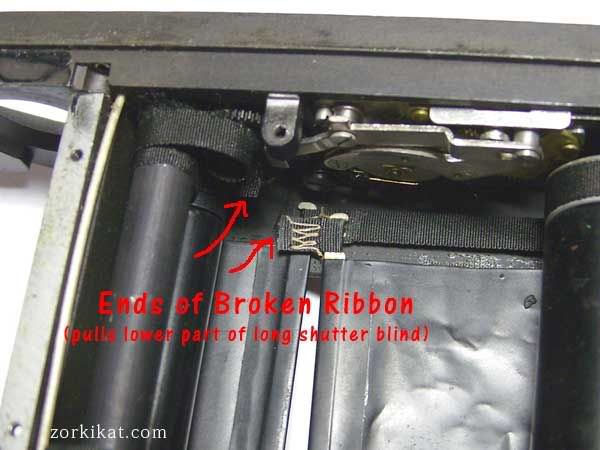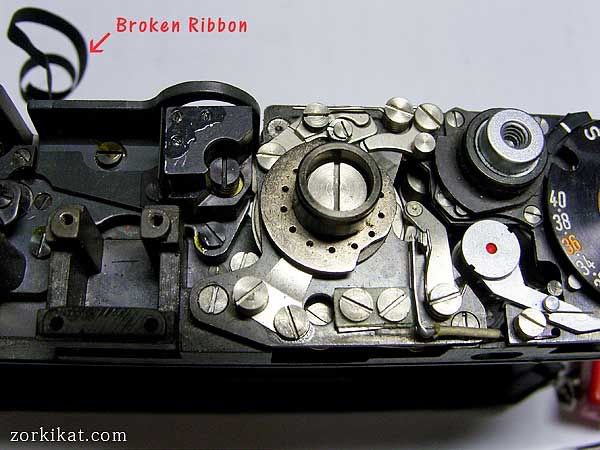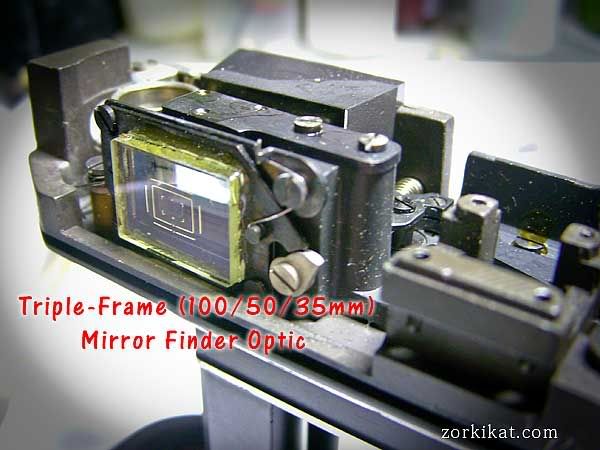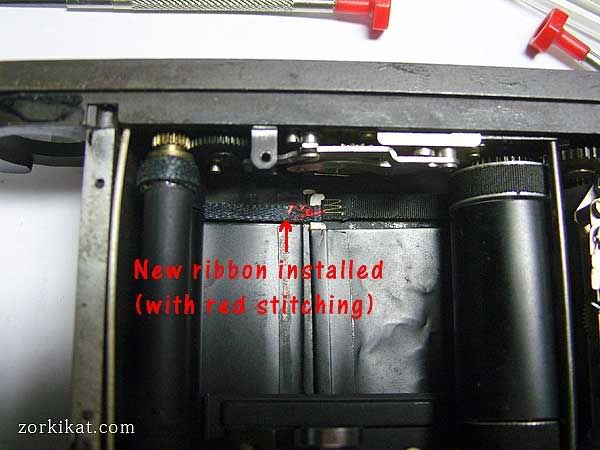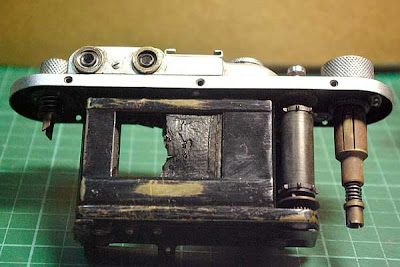
These are home-brewd specialties. Quick-acting Fixer and Film Developer concentrate. Both unique. And perhaps the only ones of their type available here in the Philippines. The supply of such chemistry here is dwindling. They are not that easy to source anymore. With these, we need not fear the possibility of losing developing chemicals should the firms which import or distribute them decide to quit doing so.
"PaRODINAL FILM DEVELOPER CONCENTRATE.

Our homebrew is derived from the formula first published on the net by Donald Qualls. It's a Rodinal-type developer formula derived from paracetamol. Paracetamol (acetaminophen) and Rodinal (1,4-para aminophenol) are cousins. And through a process which involves alkaline hydrolisation, paracetamol is converted to para-aminophenol.
However, our paRodinal brew is different. It does not use the pill type paracetamol, so the solution comes out clean and clear of suspended detritus. It also uses some ingredients listed in the original Agfa Rodinal formula; using Potassium Hydroxide instead of sodium hydroxide mentioned in the original Qualls formula. Our paRodinal Brew also has anti-chelating and anti-fog components which are absent from the original one published on the net.
PaRodinal shares many of the traits the original Rodinal is known for. Longevity, compensation, increased contour sharpness, and ease of use.
This developer is a "one-shot" type. It means that a working solution is diluted (from 1+25 to 1+200) from the concentrate. With those small amounts, a 120 ml bottle can develop more than 20 rolls of 35mmX36 exp film. One-shot also means that everytime the developer is used, its potency is assured. Unlike stored working-strength developers like D76 where re-use always involves the question of how much time should be added each time it is reused to compensate for partial exhaustion. "One shot" means mix the developer, use it, and then flush it down the drain.
Like Rodinal, PaRodinal also is stable and has a long storage life, when stored sealed in its container. The concentrate, which starts clear, will darken until it is as dark as Coca-cola. The darkening is no sign of deterioration. The concentrate can sit for months, or maybe years and still be excpected to work like when it was new. Other Developers like D76 have to used within a month (three months maximum) before they totally become useless.
Dilutions determine how the negative comes out. Low dilutions (like 1+25) develop shorter, and give higher contrast. High dilutions (like 1+100) give longer developing times, higher contour sharpness and compensation. High contour sharpness means there is an increase in apparent sharpness in the negative- the details look sharper. Compensation means that highlights don't block up and shadows catch up- less burned out whites and dead shadows in the print.
1+50 is the suggested dilution for general use.
PaRodinal is not a fine-grain developer. Film grain will be seen as is. Film developed in other types of developer like D76, which have high sodium sulphite content, will appear to finer grain. The extra sulphite in the developer 'shaves' and eats away at the edge of the grain and make them appear continuous. In the print, the absence of these edges make it look that the grain is smooth. But this also reduces the sharpness in the finer details. PaRodinal, like the original Rodinal instead develops honestly and shows the grain as it really is. HIgher dilutions tend to make the grain look a bit finer.
This developer is used just like Rodinal. The same times for any given dilution and temperature combination can be applied for the film in use. This developer must be used at 20ºC. It is not recommended to be used above 25ºC because the film's gelatine emulsions can swell and soften too much at higher temperatures.
"EXPRESS FIXER"

"Express" means that this fixer does its job faster than conventional fixers. It contains some ammonium thiosulphate. It fixes the film completely in about 5 to 7 minutes. Some films will even fix at 2 minutes.
Fixing time is really double the clearing time. So if an undeveloped strip clears in 1 minute, fixing time is 2 minutes. A bit more time can be given to make sure that the film emulsion is properly hardened. This fixer contains some hardener to harden the emulsion and make it more robust against abrasions, scratches, frilling, and swelling. The last can make the emulsion crack and craze, which gives the film a pseudo grainy appearance.
Typically, Luckypan film will fix in about 3 minutes. Five or six minutes is sufficient for Fuji Neopan 400. T-grain films like Kodak Tmax or Ilford Delta will take longer because Tgrain emulsions really clear longer.
A litre of fixer will fix 25-30 rolls (less with Tgrain films). Using an Acid Stop bath between developing and fixing will extend the life of the fixer.
This fixer is of the acid-hardening type.
"PaRODINAL FILM DEVELOPER CONCENTRATE.

Our homebrew is derived from the formula first published on the net by Donald Qualls. It's a Rodinal-type developer formula derived from paracetamol. Paracetamol (acetaminophen) and Rodinal (1,4-para aminophenol) are cousins. And through a process which involves alkaline hydrolisation, paracetamol is converted to para-aminophenol.
However, our paRodinal brew is different. It does not use the pill type paracetamol, so the solution comes out clean and clear of suspended detritus. It also uses some ingredients listed in the original Agfa Rodinal formula; using Potassium Hydroxide instead of sodium hydroxide mentioned in the original Qualls formula. Our paRodinal Brew also has anti-chelating and anti-fog components which are absent from the original one published on the net.
PaRodinal shares many of the traits the original Rodinal is known for. Longevity, compensation, increased contour sharpness, and ease of use.
This developer is a "one-shot" type. It means that a working solution is diluted (from 1+25 to 1+200) from the concentrate. With those small amounts, a 120 ml bottle can develop more than 20 rolls of 35mmX36 exp film. One-shot also means that everytime the developer is used, its potency is assured. Unlike stored working-strength developers like D76 where re-use always involves the question of how much time should be added each time it is reused to compensate for partial exhaustion. "One shot" means mix the developer, use it, and then flush it down the drain.
Like Rodinal, PaRodinal also is stable and has a long storage life, when stored sealed in its container. The concentrate, which starts clear, will darken until it is as dark as Coca-cola. The darkening is no sign of deterioration. The concentrate can sit for months, or maybe years and still be excpected to work like when it was new. Other Developers like D76 have to used within a month (three months maximum) before they totally become useless.
Dilutions determine how the negative comes out. Low dilutions (like 1+25) develop shorter, and give higher contrast. High dilutions (like 1+100) give longer developing times, higher contour sharpness and compensation. High contour sharpness means there is an increase in apparent sharpness in the negative- the details look sharper. Compensation means that highlights don't block up and shadows catch up- less burned out whites and dead shadows in the print.
1+50 is the suggested dilution for general use.
PaRodinal is not a fine-grain developer. Film grain will be seen as is. Film developed in other types of developer like D76, which have high sodium sulphite content, will appear to finer grain. The extra sulphite in the developer 'shaves' and eats away at the edge of the grain and make them appear continuous. In the print, the absence of these edges make it look that the grain is smooth. But this also reduces the sharpness in the finer details. PaRodinal, like the original Rodinal instead develops honestly and shows the grain as it really is. HIgher dilutions tend to make the grain look a bit finer.
This developer is used just like Rodinal. The same times for any given dilution and temperature combination can be applied for the film in use. This developer must be used at 20ºC. It is not recommended to be used above 25ºC because the film's gelatine emulsions can swell and soften too much at higher temperatures.
"EXPRESS FIXER"

"Express" means that this fixer does its job faster than conventional fixers. It contains some ammonium thiosulphate. It fixes the film completely in about 5 to 7 minutes. Some films will even fix at 2 minutes.
Fixing time is really double the clearing time. So if an undeveloped strip clears in 1 minute, fixing time is 2 minutes. A bit more time can be given to make sure that the film emulsion is properly hardened. This fixer contains some hardener to harden the emulsion and make it more robust against abrasions, scratches, frilling, and swelling. The last can make the emulsion crack and craze, which gives the film a pseudo grainy appearance.
Typically, Luckypan film will fix in about 3 minutes. Five or six minutes is sufficient for Fuji Neopan 400. T-grain films like Kodak Tmax or Ilford Delta will take longer because Tgrain emulsions really clear longer.
A litre of fixer will fix 25-30 rolls (less with Tgrain films). Using an Acid Stop bath between developing and fixing will extend the life of the fixer.
This fixer is of the acid-hardening type.



